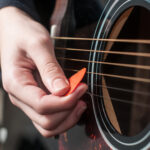Playing the ukulele with long nails can be a challenge, but it is not impossible. In fact, some individuals prefer this style and are able to create a unique sound and technique that sets them apart from other ukulele players.
This article will help you understand how to navigate the potential obstacles of playing the ukulele with long nails and provide you with tips and techniques to perfect your skills.
The key to playing the ukulele with long nails is proper preparation, understanding the unique methods behind this playing style, and recognizing your own strengths and limitations as a long-nailed musician.
In this article, we will discuss how to prepare your nails for playing, explore the different techniques tailored to long-nailed players, and even delve into specific genres and styles to help you find your unique sound.
Key Takeaways on How to Play Uke with Long Nails
- Preparation of nails is essential for successful long-nailed ukulele playing
- Unique techniques can be mastered to accommodate the challenges and advantages of long nails
- Exploring various genres and styles can help long-nailed ukulele players find their own sound
Check out these other popular picks in this category:
- Can You Play Electric Guitar Without a Pick?
- Do You Need an Amp to Play an Electric Guitar?
- How Many People Play Guitar?
The Basics of the Ukulele
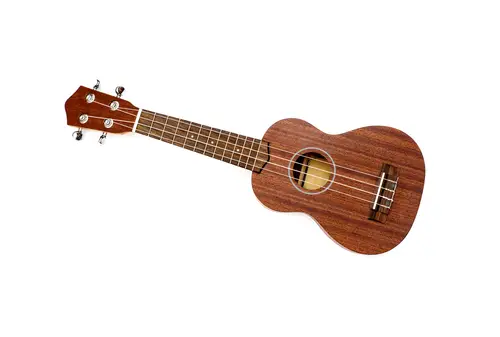
Understanding the Ukulele
The ukulele is a versatile instrument with a unique sound and a rich history. Originating from Hawaii, it has become popular all over the world. Perfect for beginners, playing the ukulele can be an easy and enjoyable experience, even for those with limited musical background.
Differences Between the Ukulele and Guitar
Both the ukulele and the guitar belong to the stringed instrument family, but they have some key differences. The ukulele usually has four strings, whereas the guitar has six. The size of the ukulele is also generally smaller, with concert and soprano being the most common sizes.
Parts of the Ukulele Involved in Playing
When learning to play the ukulele with long nails, it is important to understand the basic parts that are involved in playing. These include:
- Body: The main portion of the instrument that generates sound.
- Neck: The long, thin part where the frets are located.
- Headstock: The top part of the neck, holding the tuning pegs.
- Strings: The four nylon or metal strings stretched across the ukulele.
- Frets: The spaces along the neck that indicate where to place your fingers.
Ukulele for Beginners
For beginners starting to play the ukulele with long nails, a few simple tips can help:
- Use a nylon-stringed instrument, as it is more forgiving on nails and fingers.
- Be mindful of finger placement to avoid strumming with your nails; it is better to use the fleshy part of your fingertips.
- Consider using a felt pick instead of strumming with your nails, which will reduce the risk of chipping or breaking them.
- If necessary, trim your nails slightly to create a comfortable playing experience.
The ukulele is a wonderful and accessible instrument with a wide range of possibilities. With the right approach, even those with long nails can enjoy playing beautiful music on this unique instrument.
Long Nails and Ukulele Playing
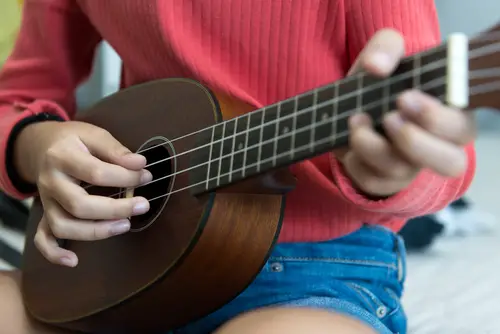
Benefits of Long Nails in Playing
Long nails can be advantageous for ukulele players, especially when it comes to the technique of fingerpicking or producing clean and crisp tones. They allow the player to get a better grip on the strings and provide more precision while plucking.
Furthermore, long nails can also add a distinctive tone color to the music, as the harder surface of the nails creates a sharper sound. This can be particularly helpful when playing specific genres like flamenco or classical music.
Challenges with Long Nails
Despite their benefits, long nails can also pose some challenges to ukulele players. One issue is that they can get in the way and cause discomfort while fretting, particularly for those just starting to learn the instrument.
In some cases, the nails may even lead to incorrect finger placement and affect the intonation of the notes. Additionally, maintaining long nails requires more care and attention, as they can easily break or chip, affecting the player’s performance.
Natural Nails vs Acrylic Nails
When considering long nails for ukulele playing, there are two options: maintaining long natural nails or using acrylic nails. Natural nails are the most common choice among musicians, as they offer a more organic and authentic tone.
However, it can be a challenge to keep them in good condition, as they are susceptible to breakage and may require regular manicures and careful nail polish application for protection.
On the other hand, acrylic or fake nails have grown in popularity among ukulele players. These synthetic nails are generally more durable and low-maintenance than natural nails. They can be shaped according to the player’s preference, allowing for optimal nail length and consistent sound production.
However, acrylic nails might not offer the same richness in tone as natural nails, and some players may find them less comfortable or authentic-feeling. In the end, it comes down to personal preference and commitment to proper nail care.
Nail Preparations for Ukulele Playing

1. Maintaining Nail Length
Proper nail length is crucial for ukulele players with long nails. It is essential to keep nails trimmed to a suitable length so they do not interfere with fretting or strumming.
Players should establish a routine for nail maintenance, which may involve trimming nails every week or two to ensure optimal playing performance.
2. Effective Nail Filing Practices
Using a nail file or sandpaper, file nails into the desired shape. Be sure to file in one direction only to avoid causing damage to the nail.
This helps create a smooth surface, preventing any uneven edges that may cause issues while playing. It is recommended to use a fine-grit nail file or sandpaper for the best results.
Filing tips:
- File in one direction: This prevents damage to the nail and ensures a smooth finish.
- Use a fine-grit file or sandpaper: A finer grit creates a smoother nail edge, which is essential for playing.
3. Gluing and Care for Acrylic Nails
For ukulele players who prefer to use acrylic nails, proper gluing and care are essential to maintain playing performance. Apply glue sparingly to avoid excessive build-up, which could hinder finger movement or cause discomfort while playing.
Keep a close eye on acrylic nails’ condition, and if any issues arise, consult a professional nail technician for adjustments or repairs. Regular maintenance of acrylic nails ensures they remain secure and in good condition for optimal playing performance.
Acrylic nail care tips:
- Apply glue sparingly: Excessive glue can hinder finger movement and cause discomfort.
- Monitor nail condition: Regularly check acrylic nails for signs of damage or wear, and consult a professional nail technician as needed to maintain optimal performance.
Ukulele Playing Techniques with Long Nails

1. Strumming
To play the ukulele with long nails, it’s essential to adjust the strumming technique. Use the back of the nail on the strumming hand’s index finger to effectively brush across the strings.
This method helps maintain a clear tone and minimizes the risk of nail breakage. Maintain an even rhythm and practice different strumming patterns to increase versatility.
2. Fingerpicking
Fingerpicking, also known as fingerstyle, can be a bit more challenging with long nails. It’s crucial to develop a comfortable approach to produce clean notes. Instead of using the fingertips, leverage the nails on the thumb, index, middle, and ring fingers.
You may also consider slightly adjusting the angle of the picking hand, enabling the nails to pluck the strings without interference. Additionally, practice various fingerpicking patterns to enhance your skills.
3. Creating Chords
When forming chords on a ukulele with long nails, focus on the chord-making hand’s position. Ensure that the fingertips are firmly pressing down on the fretboard rather than using the flat part of the fingers.
This technique helps prevent any buzzing or unclear tones. It might take time to adapt to this method, but the results will be precise and crisp chords.
4. Note Precision
To achieve clear and accurate note precision with long nails, it’s vital that both hands work together effectively. Concentrate on using the strumming hand for gentle, controlled strumming or fingerpicking, while making sure that the chord-making hand firmly presses down on individual notes.
By practicing various musical pieces and exercises that challenge your comfort level, you’ll develop greater control and precision when playing the ukulele with long nails.
Advanced Techniques for Long Nailed Ukulele Players
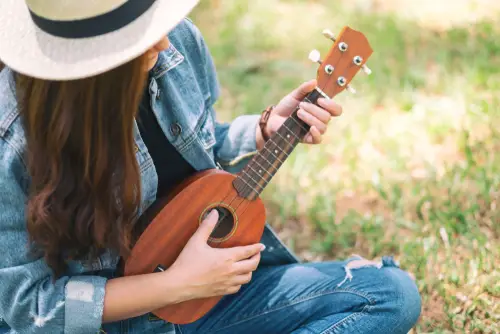
1. Control and Pressure Usage
Long nailed ukulele players can still maintain excellent control over their instrument by focusing on pressure usage. The key is to apply the right amount of pressure on the strings while keeping the fretting hand relaxed. This will ensure a clean and clear sound.
Start by practicing the technique with your index and middle fingers, as they are the most commonly used for playing the ukulele. Gradually build up strength in your grip to maintain a good grip on the instrument, even with long nails.
2. Fretting and Dexterity
Fretting hand dexterity is crucial for long nailed ukulele players, as it allows them to navigate the fretboard with ease. To increase your dexterity, begin by focusing on finger placement near the frets.
It may be helpful to angle your fingers slightly, as this can aid in avoiding contact between your nails and the fretboard. Practice smooth transitions between chords and individual notes to build up muscle memory and improve your overall fretting technique.
- Tip: Keep your nails well-maintained and filed to a manageable length that does not interfere with your fretting hand movements.
3. Incorporating Rhythm and Patterns
Ukulele players with long nails can still create dynamic rhythms and patterns by focusing on plucking techniques. Experiment with different methods, such as using the pads of your fingers or a combination of your nail and fingertip.
Mastering a variety of techniques will allow you to maintain a consistent rhythm, even with long nails. Additionally, practice strumming patterns with both up and down strokes to increase your versatility when playing the instrument.
Remember, patience and practice are key to mastering any skill. By dedicating time to these techniques and adjusting your playing style, it is possible to excel at playing the ukulele, even with long nails.
Alternative Ukulele Playing Methods for Long Nailed Individuals
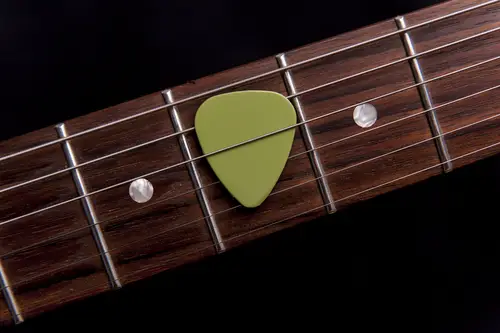
1. Using Finger and Thumb Picks
For those who have long nails but still want to enjoy playing the ukulele, finger and thumb picks can be a great solution. These small devices, often made of plastic or metal, can be worn on the fingertips to provide a more controlled strumming experience.
Thumb picks are designed to be worn on the thumb, while finger picks are usually used on the index and middle fingers. The advantage of using finger and thumb picks is that they allow players to maintain their long nails while still producing a clean and sharp sound on the ukulele.
2. Utilizing a Plectrum or Guitar Pick
Another option for long nailed individuals is using a plectrum, also known as a guitar pick. This small, flat tool is used to pluck or strum strings on various stringed instruments.
Holding the plectrum between the thumb and index finger, a player can strum the ukulele strings without damaging their nails or having any interference from their nail length.
This method can take some getting used to, but with practice, a player can achieve a natural and fluid playing style using a plectrum.
3. Pads of Your Fingers Playing Technique
An alternative playing method for those with long nails entails using the pads of your fingers rather than the fingertips. By resting the pads, or fleshy part of the fingers, on the strings, players can successfully strum or pick the ukulele without their nails interfering with the process.
This technique might require some experimentation and adjustments in hand position, but once mastered, it can provide a comfortable and enjoyable playing experience for those with long nails.
Exploring Different Genres with Long Nailed Ukulele Playing

1. Jazz
When playing jazz on the ukulele with long nails, a warmer tone is often desired. To achieve this, you can experiment with the angle at which you strike the strings and adjust the nail length to get the desired tone.
Strumming closer to the neck, rather than the bridge, can provide a rounder and warmer sound. The use of long nails also enables the player to articulate complex jazz chords and intricate finger-picking patterns with greater precision.
2. Pop
In the pop genre, a brighter sound is usually preferred for ukulele playing. Long nailed players can achieve this by strumming closer to the bridge and using a more rigid attack, allowing the strings to vibrate more freely.
This will produce a more percussive and snappy sound, which is characteristic of pop music. In addition, long nails can facilitate faster chord changes and more intricate picking patterns, adding extra flair to pop-style ukulele performances.
3. Classical
Classical ukulele playing with long nails requires a different approach, as an articulate sound with clear individual notes is key. To achieve this, players should use a combination of finger-style techniques, such as rest-strokes and free-strokes, along with precise plucking, to produce a clean and crisp tone.
The use of long nails aids in enhancing the sustain and projection of the instrument in a classical context. Developing proper technique, finger strength, and hand positioning are integral to enrich your classical playing.
4. Flamenco
Flamenco ukulele playing is a unique genre where having long nails can be advantageous. The nails are essential for executing various techniques, such as the golpe (tap), rasgueado (strumming), and alzapúa (thumb pluck).
The brighter and more percussive tone generated by long nails helps accentuate the rhythmic elements inherent in flamenco music. Paying attention to the dynamics, rhythm, and articulation is crucial for capturing the essence of flamenco style.
Tips and Advice for Long Nailed Ukulele Players

1. Practice Routines
Developing a consistent practice routine is crucial for long nailed ukulele players. It helps them adjust their techniques to accommodate nail length and finds strategies to avoid unpleasant sounds or excessive nail wear.
- Allocate time each day to practice fingerpicking patterns and strumming techniques.
- Incorporate nail care into the practice routine, such as filing and shaping the nails, to ensure optimal playing grip.
- Experiment with different angles while strumming to identify which approach provides the best sound with minimal nail contact.
2. Personal Preference and Playing Style
Personal preference plays a significant role in determining the best playing style for those with long nails.
- Consider using a thumb or finger pick instead of the nail itself, as it can prevent nail damage and improve control while playing.
- Some players with long nails may prefer to adjust their hand position, ensuring that the padding of their fingers, rather than the nails, comes into contact with the strings.
- Select the most comfortable ukulele size, as it might affect the ease of playing with long nails; concert and tenor ukuleles offer more space between the strings.
3. Learning from Others
Learning from instructors and watching videos showcasing other long-nail players can offer valuable insights.
- Attend
Notable Long Nailed Ukulele Players and Their Styles
1. Dolly Parton

Dolly Parton, a famous musician and songwriter, is known for her long nails and her ability to play the ukulele. She uses her long nails as natural picks, plucking the strings with her right hand’s fingers.
The index, middle, and ring fingers are her primary tools for generating a unique, crisp sound. Her style and technique have become famous among ukulele enthusiasts, and musicians alike.
2. Classical Guitarists
Many classical guitarists also play the ukulele with longer nails on their plucking hand. These nails help them create a naturally brighter and more pronounced sound as they strike the strings.
Classical players usually focus on fingerstyle techniques, using their thumb, index, middle, and ring fingers to pick individual strings. This enables them to play intricate melodies and harmonies on their instruments.
3. Solo Ukulele Players
Long nails can be beneficial for solo ukulele players too, as they allow musicians to develop their unique playing styles. Soloists often use their nails to pluck the strings more accurately, creating a clear and distinct tone.
- Fingerpicking: Some soloists use fingerpicking techniques, similar to classical guitarists. They use their thumb, index, middle, and ring fingers to pluck the strings, creating rich and complex musical textures.
- Strumming: Other solo ukulele players prefer to strum chords using their nails on their index or middle fingers, which results in a bright and crisp sound. This approach adds depth and character to the instrument.
Frequently Asked Questions
How can I adjust my finger placement with long nails?
To adjust finger placement with long nails, it is essential to approach the fretboard at a slightly steeper angle. This will help to maintain proper pressure on the strings while avoiding contact between the nail and the fretboard.
Experiment with different angles and positions until you find the most comfortable and effective method.
Do long nails impact strumming technique?
Long nails can impact the strumming technique, as they may add a different sound to the strum or make it challenging to maintain control over the strings. However, it is possible to adapt one’s technique to accommodate long nails.
This may include holding the hand at a different angle or using the pad of the thumb for more delicate strumming.
Which picking style works best with long nails?
Fingerpicking often works well with long nails, as this technique utilizes the nails to pluck the strings. The nails can add a bright, crisp sound to the notes.
It is essential, however, to ensure that the nails on the picking hand are well maintained and do not have any rough edges, as this could lead to unwanted string noise or even cause damage to the strings.
How to maintain nail length for optimal ukulele playing?
It is important to maintain nail length for optimal ukulele playing regularly. This includes filing and shaping the nails, keeping them smooth and free of jagged edges.
Aim to maintain a consistent length and shape for the best results in technique and sound quality. Pay attention to the nail growth and adjust your playing and maintenance to ensure consistent performance.
Are there any alternative methods for fretting with long nails?
Alternative methods for fretting with long nails include using the fingertips or the pads of the fingers rather than the very tips. Another option is to utilize a partial capo or even a spider capo for particularly challenging fingerings.
Both approaches enable players to fret the strings without interference from their nails and can make it easier to maintain proper positioning and pressure on the strings.
Should I use a felt pick for strumming with long nails?
Using a felt pick for strumming with long nails can be beneficial, as it can provide a softer sound and help to minimize any noise created by the nails contacting the strings.
Felt picks also provide more control than relying solely on the nails, and they can prevent potential damage to the strings or nails.
Experimenting with different types of felt picks can help determine which is the best fit for your playing style and preferred sound.

My name is Howard Matthews and I have been playing the guitar since I was knee-high. My parents like to joke that I was pulling the strings even before I was born. In fact, one of my earliest memories is sitting on the couch with my dad’s guitar, wreaking havoc on the chords.
Now, 40 years later, I can attest that I play them much better than I did back then. I have followed in the footsteps of both my parents – much to their delight – and have been the main guitarist in my band for the best part of three decades.
Music has always been my passion, and until recently my life has been so consumed with it that I haven’t had a moment to have a breath (and I wouldn’t have it any other way)!



